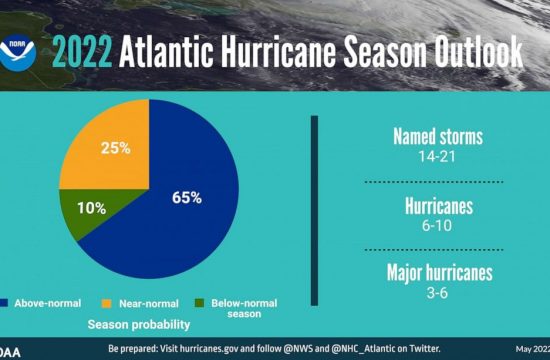In the summer of 2005, President George W. Bush was on vacation at his ranch in Crawford, Texas, when he began flipping through an advance reading copy of a new book about the 1918 flu pandemic. He couldn’t put it down.
When he returned to Washington, he called his top homeland security adviser into the Oval Office and gave her the galley of historian John M. Barry’s “The Great Influenza,” which told the chilling tale of the mysterious plague that “would kill more people than the outbreak of any other disease in human history.”
“You’ve got to read this,” Fran Townsend remembers the president telling her. “He said, ‘Look, this happens every 100 years. We need a national strategy.'”
Thus was born the nation’s most comprehensive pandemic plan — a playbook that included diagrams for a global early warning system, funding to develop new, rapid vaccine technology, and a robust national stockpile of critical supplies, such as face masks and ventilators, Townsend said.
The effort was intense over the ensuing three years, including exercises where cabinet officials gamed out their responses, but it was not sustained. Large swaths of the ambitious plan were either not fully realized or entirely shelved as other priorities and crises took hold.
But elements of that effort have formed the foundation for the national response to the coronavirus pandemic underway right now.
“Despite politics, despite changes, when a crisis hits, you pull what you’ve got off the shelf and work from there,” Townsend said.
When Bush first told his aides he wanted to focus on the potential of a global pandemic, many of them harbored doubts.
“My reaction was — I’m buried. I’m dealing with counterterrorism. Hurricane season. Wildfires. I’m like, ‘What?'” Townsend said. “He said to me, ‘It may not happen on our watch, but the nation needs the plan.'”
Over the ensuing months, cabinet officials got behind the idea. Most of them had governed through the Sept. 11 terror attacks, so events considered unlikely but highly-impactful had a certain resonance.
“There was a realization that it’s no longer fantastical to raise scenarios about planes falling from the sky, or anthrax arriving in the mail,” said Tom Bossert, who worked in the Bush White House and went on to serve as a homeland security adviser in the Trump administration. “It was not a novel. It was the world we were living.”
According to Bossert, who is now an ABC News contributor, Bush did not just insist on preparation for a pandemic. He was obsessed with it.
“He was completely taken by the reality that that was going to happen,” Bossert said.
Tune into ABC at 1 p.m. ET and ABC News Live at 4 p.m. ET every weekday for special coverage of the novel coronavirus with the full ABC News team, including the latest news, context and analysis.
In a November 2005 speech at the National Institutes of Health, Bush laid out proposals in granular detail — describing with stunning prescience how a pandemic in the United States would unfold. Among those in the audience was Dr. Anthony Fauci, the leader of the current crisis response, who was then and still is now the director of the National Institute of Allergy and Infectious Diseases.
“A pandemic is a lot like a forest fire,” Bush said at the time. “If caught early it might be extinguished with limited damage. If allowed to smolder, undetected, it can grow to an inferno that can spread quickly beyond our ability to control it.”
The president recognized that an outbreak was a different kind of disaster than the ones the federal government had been designed to address.
“To respond to a pandemic, we need medical personnel and adequate supplies of equipment,” Bush said. “In a pandemic, everything from syringes to hospital beds, respirators masks and protective equipment would be in short supply.”
Bush told the gathered scientists that they would need to develop a vaccine in record time.
“If a pandemic strikes, our country must have a surge capacity in place that will allow us to bring a new vaccine on line quickly and manufacture enough to immunize every American against the pandemic strain,” he said.
Bush set out to spend $7 billion building out his plan. His cabinet secretaries urged their staffs to take preparations seriously. The government launched a website, www.pandemicflu.gov, that is still in use today. But as time passed, it became increasingly difficult to justify the continued funding, staffing and attention, Bossert said.
“You need to have annual budget commitment. You need to have institutions that can survive any one administration. And you need to have leadership experience,” Bossert said. “All three of those can be effected by our wonderful and unique form of government in which you transfer power every four years.”
Bush declined, through a spokesman, to comment on the unfolding crisis or discuss the current response. But his remarks from 15 years ago still resonate.
“If we wait for a pandemic to appear,” he warned, “it will be too late to prepare. And one day many lives could be needlessly lost because we failed to act today.”











